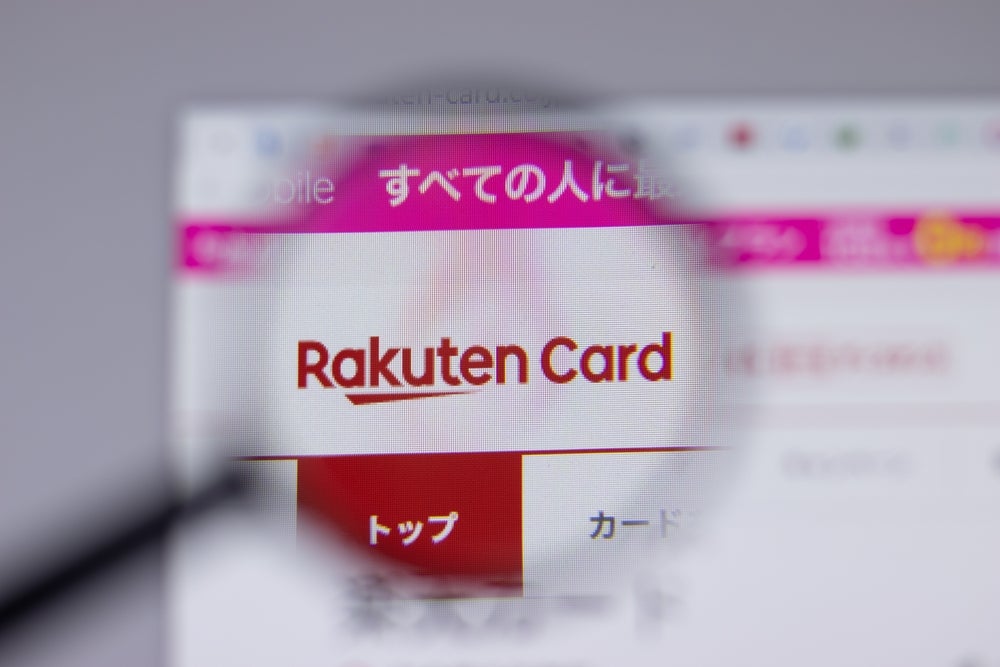A spate of retailer bankruptcies in the
US has left thousands of gift cardholders in limbo. Unable to use
their cards, and unable to retrieve funds deposited onto the cards,
cardholders and consumer groups are ratcheting up the pressure on
regulators to clarify the legal situation. Victoria Conroy
reports.
 Retailers across the world are
Retailers across the world are
united in the view that 2008 may go down as one of the worst
trading years in living memory, but many would have been hoping for
a brief upturn in the run-up to the Christmas holiday period,
typically a time when sales volumes can make or break a
business.
However, the roll-call of retailers who
have gone belly up into bankruptcy continues to grow, with some of
the largest US retailers such as KB Toys, Linens N’ Things and
Mervyn’s being added to the list over the last year, with many more
expected over 2009.
In the UK, one of the most recognisable
names on the high street, Woolworths, recently closed its doors for
the last time, as did music and DVD retailer Zavvi, and they are
certainly unlikely to be the last as the global economic turbulence
continues.
Gift card-driven
sales
Those retailers with closed-loop gift card
offerings could have been forgiven for a brief moment of optimism
in the run-up to the Christmas period, as year after year, the gift
card industry has enjoyed a roughly 20 percent annual average
growth rate since gift cards first appeared on the scene in the
mid-1990s.
How well do you really know your competitors?
Access the most comprehensive Company Profiles on the market, powered by GlobalData. Save hours of research. Gain competitive edge.

Thank you!
Your download email will arrive shortly
Not ready to buy yet? Download a free sample
We are confident about the unique quality of our Company Profiles. However, we want you to make the most beneficial decision for your business, so we offer a free sample that you can download by submitting the below form
By GlobalDataMany retailers rely on the cards to drive
consumers into stores, both before and after the Christmas holiday
period. In the run-up to Christmas, consumers will be looking to
buy gift cards for friends and relatives, and post-Christmas, gift
card recipients will be entering stores in order to use them.
For retailers, gift cards offer several
revenue streams, such as purchase fees and unspent value left on
the card (breakage or float).
The value of the card resides on the card
from the time it is initially loaded until it is fully redeemed,
therefore consumers have an incentive to spend the full value of
the card either in one visit or in multiple visits, or to spend
more than the loaded value.
On average, consumers tend to spend around
25 percent to 40 percent more than the actual value of the card.
However, in the run-up to Christmas 2008, warnings that holiday
gift cards could be losing their appeal will only have added to the
gloom currently surrounding the retail sector.
Even though gift cards have consistently
appeared top of many consumers’ wish lists, a pre-Christmas 2008
survey from the US National Retail Federation (NRF) found that gift
card sales were projected to fall by 6 percent over the 2008
holiday season, amounting to $24.9 billion, down from $26.3 billion
in 2007.
That’s despite the fact that year after
year, more consumers have expressed a desire to receive a gift
card, helped by aggressive marketing and promotional strategies
from retailers and independent third-party suppliers.
According to the NRF’s survey, 53.5
percent of shoppers were planning to buy gift cards, compared to
56.6 percent in 2007, and gift card shoppers would be spending less
overall on the cards ($147.33 in 2008 compared to $156.24 in
2007).
The NRF survey found that the main reason
shoppers were planning to buy fewer gift cards was because they
felt the cards were impersonal (22.7 percent), while 10.9 percent
said they would rather buy discounted merchandise than the cards
themselves.
Some 9.8 percent cited the existence of
expiry dates and fees, while 3.1 percent stated they were worried
that the retailer would soon go out of business. Indeed, it appears
that many cash-strapped consumers realised that they would get more
for their dollar by buying goods on sale, as desperate retailers
slashed their prices in the run-up to Christmas by significant
margins, while gift cards stayed at the same purchasing price.
Many consumers realised that they could
spend less on buying presents than on purchasing gift cards.
Spending declines
 According to a report from MasterCard Advisors
According to a report from MasterCard Advisors
SpendingPulse, overall retailer sales – including those from credit
cards, gift cards, cheques and cash – were down between 2 and 4
percent from 1 November to 24 December compared to 2007.
SpendingPulse examined apparel,
electronics and luxury spending in detail and found that apparel
sales were down around 20 percent with women’s clothing falling the
most.
Electronics sales declined by 26 percent,
with sales of items over $1,000 falling enough to drag down the
entire category. Luxury goods were hit hardest, with holiday sales
down 34 percent year over year.
According to US payment consultancy
TowerGroup, US gift card sales for the full year 2008 were
estimated to drop by 8.9 percent, the first ever decline since the
inception of the industry in the mid-1990s, owing largely to the US
economic downturn and consumer nervousness about struggling
retailers.
TowerGroup stated that projected 2008
sales of both open-loop and closed-loop gift cards would total
$88.4 billion. Most of the decline would come from an expected 14
percent fall in the sales of closed-loop gift cards, while
open-loop products issued by financial institutions would
experience a growth rate of 5.6 percent.
Brian Riley, research director in the bank
cards practice at TowerGroup, predicted that declines in the
merchant-sponsored gift card sector would be driven by a decrease
in retail sales, lack of consumer confidence in retailer-sponsored
gift card products and perhaps most importantly a shift to branded
products from financial institutions which permit the gift card to
be used at non-merchant locations.
“Private label gift cards should generate
$59.9 billion in total sales through 2008 year end, as compared to
$70 billion in 2007. Branded cards from financial institutions are
expected to grow to $28.5 billion in total sales in 2008, versus
$27 billion in 2007,” Riley said.
“TowerGroup expects consumers to become
more sensitive to the potential risk of failures in the retail
industry that expose private-label gift cards to value loss in the
event of bankruptcy. The sensitivity to this issue heightened in
2008 following the bankruptcies of Linens N’ Things and Sharper
Image, where more than $100 million in gift card value became
compromised in the wake of retailer filings.”
For a retail sector that is already
struggling in the rough economic environment, the fall in gift card
sales couldn’t have come at a worse time. The gift card industry
has enjoyed an average yearly growth rate of around 20 percent
since its inception, and according to Riley, about 45 percent of
all gift cards are bought during November and December.
With retail sales figures already
dropping, the spending retailers usually see after the holiday
season through gift card redemptions looks likely to evaporate. And
with consumers typically spending around 25 to 40 percent more than
the card is worth, a fall in sales and redemption will represent
another significant hit to retailers’ revenue streams.
Millions of dollars in
doubt
 For customers who received
For customers who received
gift cards for use in stores which have since entered into
bankruptcy, they face a nervous wait to see if their cards will
still be honoured and whether funds loaded onto the cards can be
retrieved.
The legal situation around US gift cards
in these circumstances is that retailers in financial trouble can
ask bankruptcy courts for permission to continue to accept gift
cards once they have filed for bankruptcy, but the bankruptcy court
has the final say as to whether cards can be redeemed.
It is estimated by the NRF that anywhere
from 10 to 20 percent of gift cards received are never redeemed for
merchandise, which results in billions of dollars of float or
breakage becoming the property of the store. In the case of a
retailer bankruptcy, the courts view unredeemed gift cards as debt
and in some circumstances the courts may not allow stores to honour
the cards.
But if the retailer then closes its doors
after filing for bankruptcy, gift cardholders are stuck with a card
that they cannot use anywhere else, and their only option is to
join the list of the defunct retailer’s creditors, with no
guarantee of seeing their money again.
When Sharper Image filed for bankruptcy in
2008, an estimated $20 million was left on its unused gift cards.
Gift cardholders could lose more than $75 million just from store
and restaurant closings in 2008, according to Riley, and the figure
could rise even higher in 2009.
Several US retailers that have recently
filed for bankruptcy initially stopped accepting gift cards,
although some, like photographic retailer Sharper Image, later said
they would honour the cards if cardholders redeemed them in
full.
Others, like KB Toys, have stated that
gift cards bought at stores will not be accepted after a certain
period and cannot be redeemed online, although they can be replaced
with an electronic gift certificate.
Legal ramifications
 US consumer groups claim
US consumer groups claim
that cardholders have relatively little protection from losing
money on gift cards when retailers enter bankruptcy, and in
September 2008 an alliance of consumer organisations asked the
Federal Trade Commission to protect shoppers’ rights, saying that
retailers should place money from gift card sales into a trust
account that could be used to honour the cards if retailers
continued trading under bankruptcy court protection.
The case of Linens N’ Things highlights
the thrust of the petition – when Linens N’ Things filed for
bankruptcy, it won court approval to continue to operate its gift
card programme, but subsequent bankruptcy filings made by the
retailer revealed that it did not maintain a cash reserve amount to
fund outstanding gift cards.
Consumers groups say that unless the gift
card industry is regulated more effectively, consumers will turn
away from buying and using gift cards in future, uncertain of which
retailer will next go under.
A survey from America’s Research Group has
already found that consumer fears over which retailer will go bust
next is prompting consumers not to buy gift cards. Some 43.2
percent of respondents said they would give gift cards less often
because they are worried that the cards would be worthless should a
retailer file for bankruptcy.
The situation is complicated by differing
state laws in the US. More than 20 states have laws restricting
fees, expiration dates and disclosure policies on gift cards but
only 5 states – California, Montana, New York, Oklahoma and
Washington – have specific laws pertaining to gift card value when
the issuer goes bankrupt.
TowerGroup notes that, to date, 36 states
have enacted legislation to address private-label gift card issues
such as expiration, fees, disclosures, and escheatment.
In 2009, Senator Charles Schumer of New
York plans to introduce federal legislation that will set some
standards on gift cards. The legislation, to be called the ‘Fair
Gift Card Act’, will require a five-year minimum life span on gift
cards and will also eliminate some fees.
Schumer plans to have the bill passed in
time for the 2009 Christmas shopping season, and although welcomed
by consumer groups, it does not directly address the issue of
retailer bankruptcies.
Industry initiatives
In an effort to raise the profile of gift
cards in the US (and also to counter rising negative media coverage
of the industry), the Retail Gift Card Association (RGCA) was
established in October 2008, formed by a group of retailers whose
goal is to ensure that consumers have “positive experiences with
the gift cards they buy and use.” Founding members include familiar
names such as Best Buy, Home Depot and Subway.
Its mission, it claims, is to create
consumer-centred policies and procedures for members that will let
consumers continue to buy and use the cards that have become the
gift of choice over the last few years.
Wary of ongoing negative publicity
surrounding expiry dates and fees, the RGCA says that some cards
bearing such terms are “clearly not in the best interest of the
consumer.”
What is telling is that membership of the
RGCA is restricted to “premier retailers with strong brands and
longevity in the market, who place particular emphasis on their
customers’ satisfaction and agree to abide by a set of principles
that place the consumer first.”
In addition to consumer-orientated
guidelines, the RGCA will also investigate new initiatives that
will provide greater security against fraud and greater protection
for consumers in the event of a retailer reorganisation or
bankruptcy.
“The RGCA is committed to working with
consumers, interest groups and the media to make sure that
customers receive products that are effective, safe and still
exciting to use,” according to Leigh Anne Ambrose, senior director
of global incentives and gift cards for Marriott International, one
of the founding members of the organisation.
The upside
For some players in the US gift card
industry, the growing number of defunct retailer gift cards is
proving to be a good thing. Websites such as Plastic Jungle,
Leverage and GiftCardRescue, which specialise in the online buying
and exchanging of gift cards, have all seen a major uplift in
visitor traffic to their websites in recent weeks, and are moving
to reassure nervous consumers by offering guarantees on the gift
cards they sell.
Leverage instituted its guarantee after
Sharper Image went into bankruptcy. Leverage says that if a company
files for bankruptcy within 90 days of a card purchase, its
customers can trade in the card for a different one.
GiftCardRescue, which allows visitors to
sell or exchange unused gift cards, offers a similar policy,
guaranteeing all transactions for gift cards purchased on its
website.
In November it instituted a new bankruptcy
protection policy that covers customers in the case of a gift card
retailer going bankrupt.
GiftCardRescue will reimburse a customer’s
gift card if the retailer goes bankrupt within a year of the gift
card purchase, as long as the retailer is no longer honouring gift
cards, and will cover the cost of insurance with its own cash
reserves.
For the wider prepaid industry, the waning
appeal of closed-loop gift cards for consumers could prove to be a
benefit for their open-loop relations. Over the past few years as
open-loop cards have become more widespread, more markets have seen
a shift from closed-loop to open-loop cards.
This is evidenced by TowerGroup’s
projection of a 5.6 percent increase in sales of open-loop
bank-issued gift cards. TowerGroup expects an increase in use of
financial institution-branded gift cards permitting access to
branded payments networks such as MasterCard, Visa, Discover and
American Express.
“Financial institution-branded cards allow
gift card holders more discretion relative to where a card is used
– either to take advantage of a holiday season that will most
likely offer deep sales discounts, or to purchase more practical
items such as food, gasoline, and other consumables,” according to
Riley.







